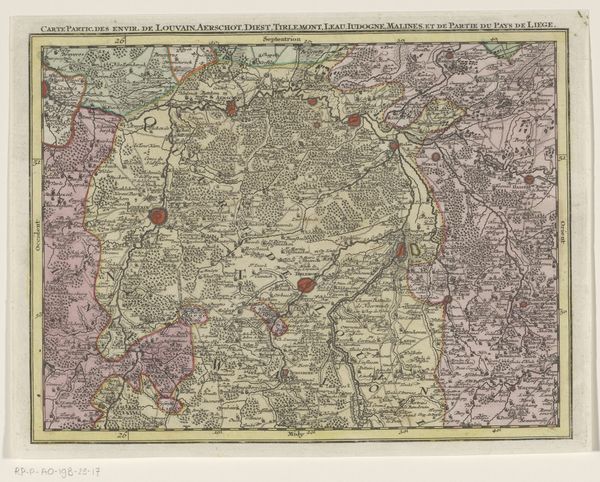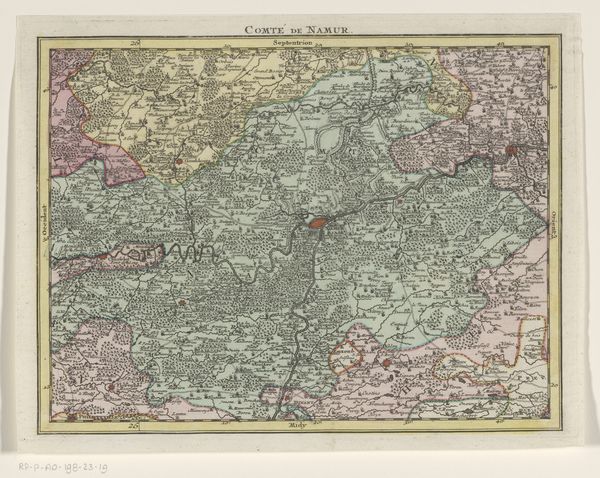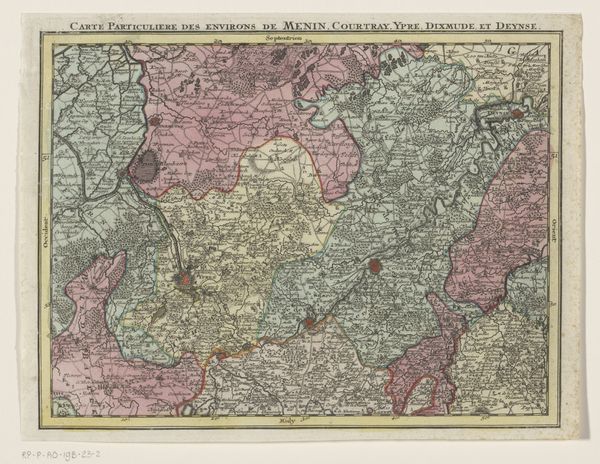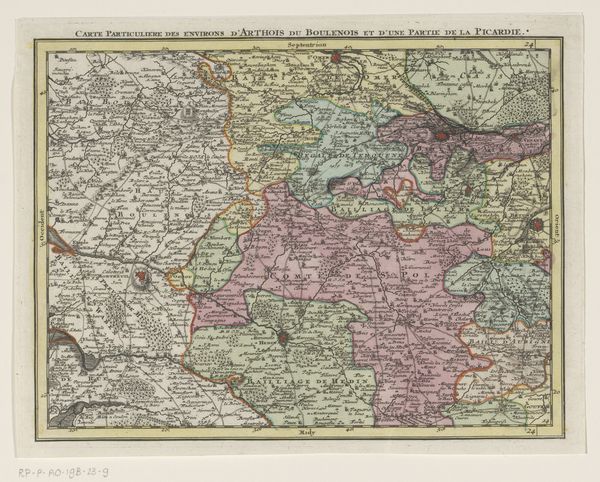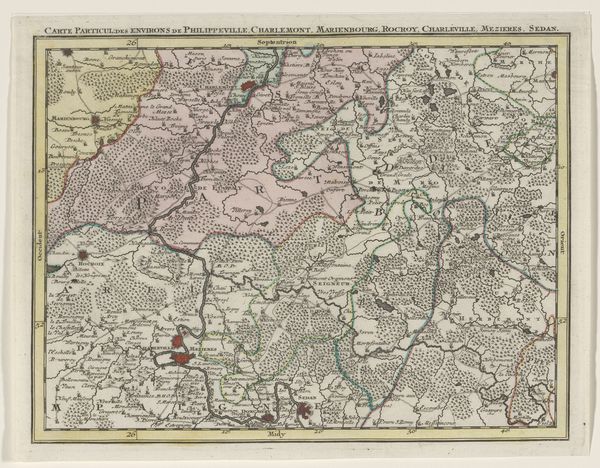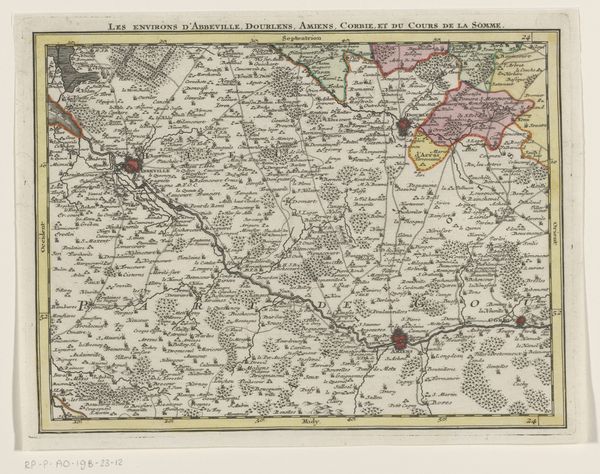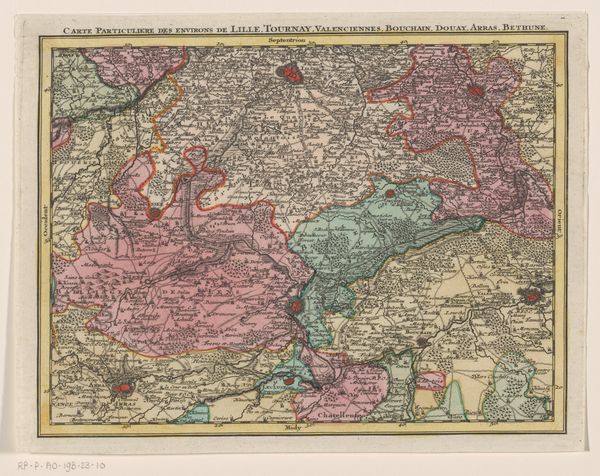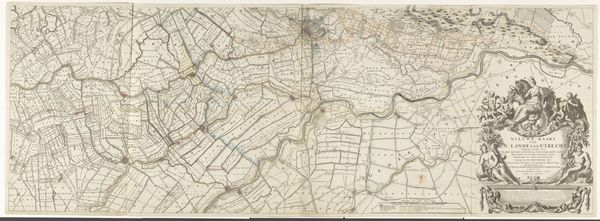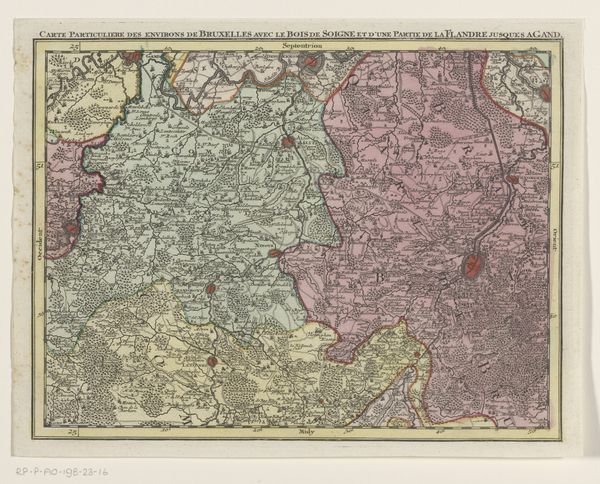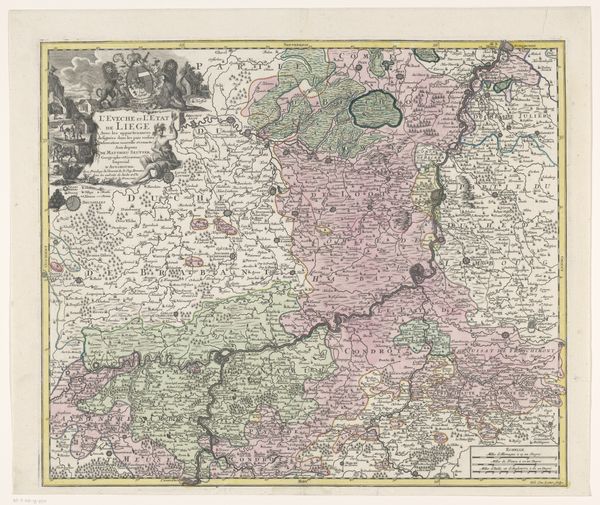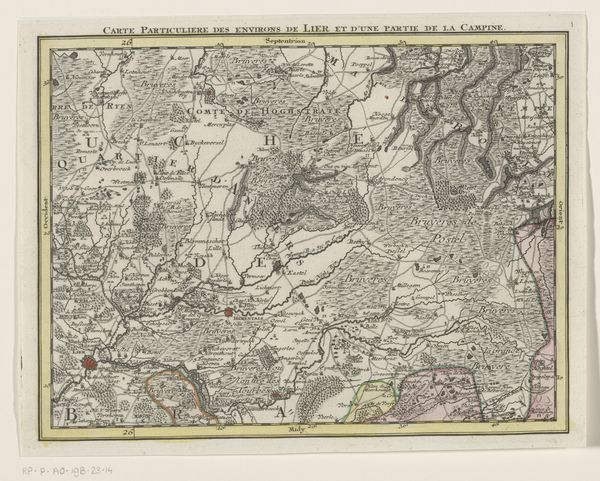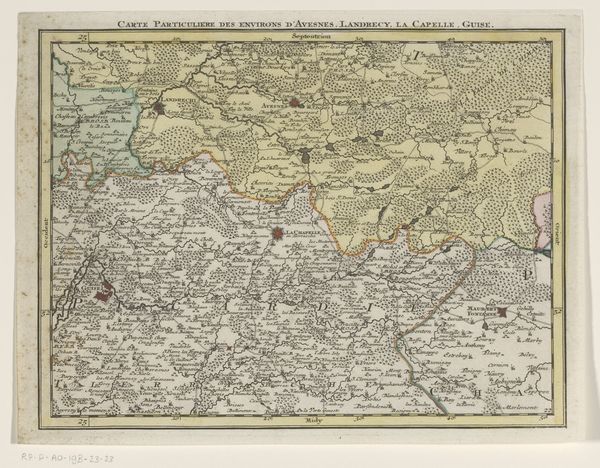
print, etching, paper
#
aged paper
#
toned paper
#
baroque
# print
#
etching
#
landscape
#
etching
#
paper
#
linocut print
#
watercolor
Dimensions: height 207 mm, width 271 mm
Copyright: Rijks Museum: Open Domain
Editor: We're looking at "Deel van een kaart van de Oostenrijkse Nederlanden," or "Part of a Map of the Austrian Netherlands," an etching by Tobias Conrad Lotter, dating from between 1737 and 1757. The aged paper and delicate lines give it a wonderfully antique feel. What initially stands out to you as you examine this piece? Curator: The primary aspect of interest is the interplay between line and tone. Notice how the density of the etched lines creates the illusion of varied textures and terrains. The artist masterfully employs hatching and cross-hatching, allowing us to visually differentiate between forests, open fields, and waterways. Editor: It’s fascinating how much information he conveys with such a limited palette. What’s the effect of the sparse watercolor additions? Curator: Precisely. The selective application of watercolor washes – primarily the pinks and reds – serves a critical function. It accentuates key locations, presumably settlements or significant geographical features, thereby guiding the viewer's eye and structuring the visual hierarchy of the map. Editor: So, it's about how the artist manipulates visual elements to direct our gaze. Curator: Absolutely. We must consider the balance and distribution of these colored areas. They are not merely decorative; they actively participate in the compositional structure of the work. Their strategic placement influences how we navigate and interpret the information presented. Ask yourself how this distribution helps delineate different geopolitical zones or communication routes within this territory. Editor: It almost feels like a puzzle, figuring out the relationships between the lines, the colors, and the overall organization of space. Curator: Precisely. Formal analysis encourages us to decode the artwork's internal logic. Editor: I hadn't thought about it that way, but it certainly sheds new light on how I look at maps. Thanks! Curator: Indeed, the act of seeing is always a process of deciphering.
Comments
No comments
Be the first to comment and join the conversation on the ultimate creative platform.
